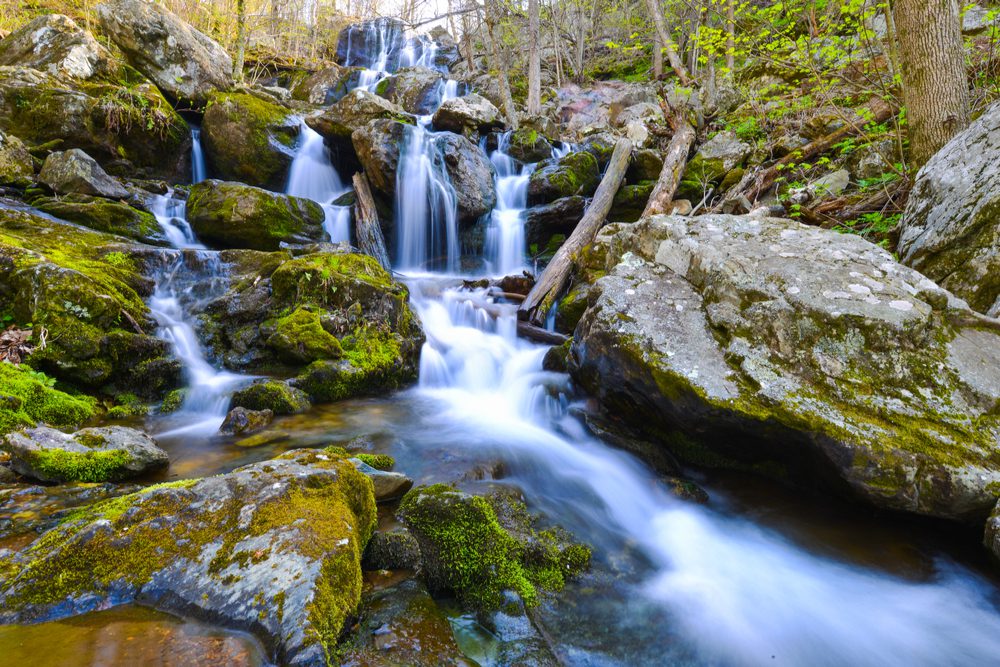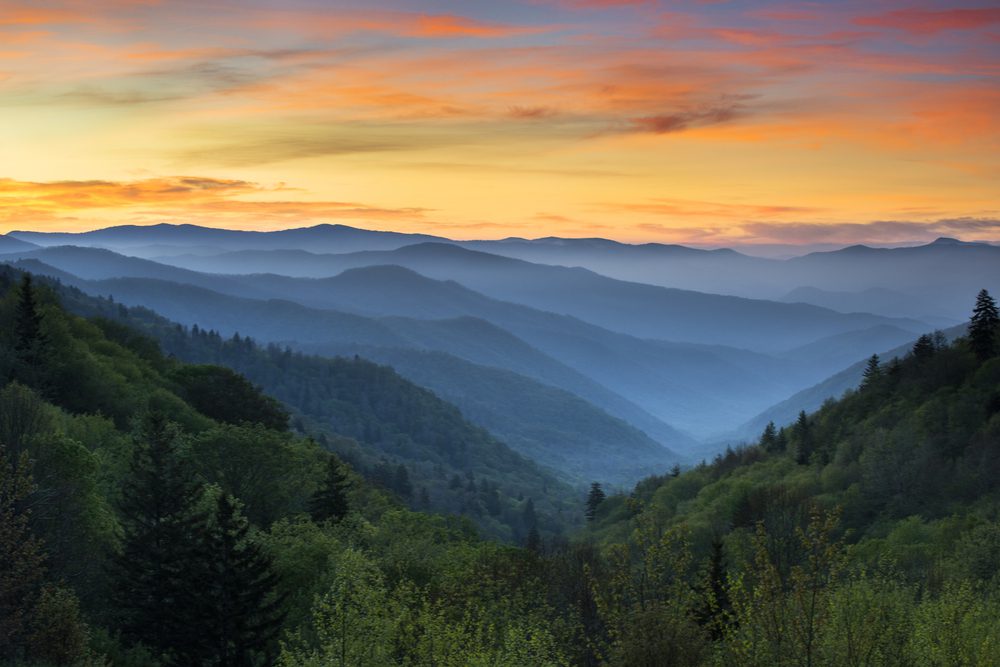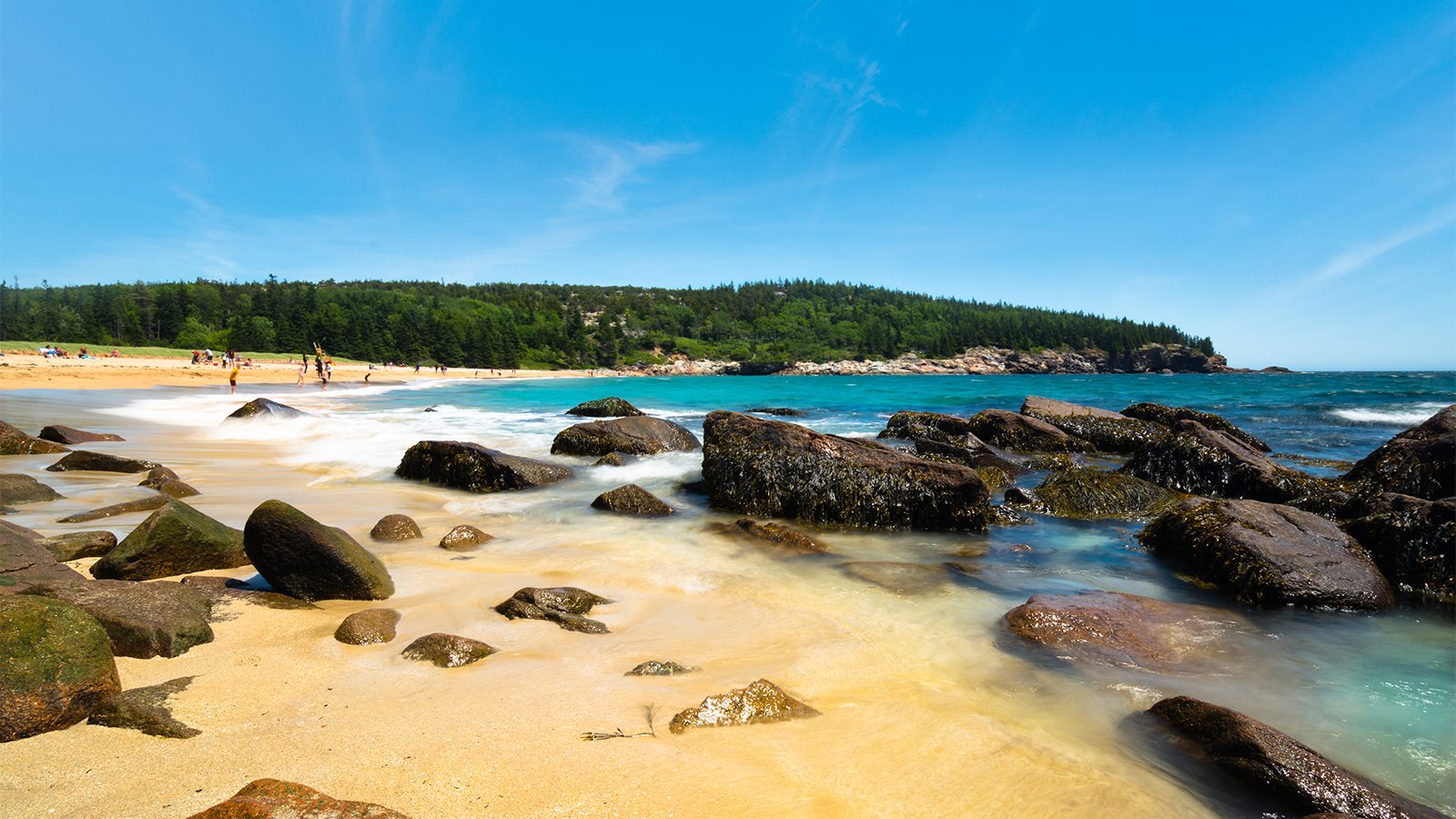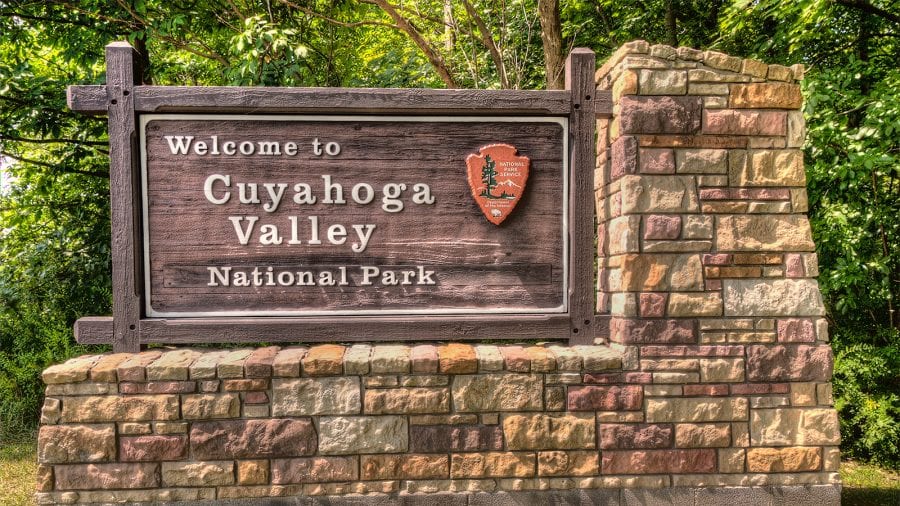
Here are some quick facts about Cuyahoga Valley National Park.
- Established : December 27, 1974
- Land Size : 50.89 square miles
- Annual Visitors : 2.2 million
- State : Ohio
- Entrance Fees : Free
More Reading :
Page Contents
Where is Cuyahoga Valley National Park?
Cuyahoga Valley National Park is located in Ohio, in the Midwest region of America. It is only 18 miles away from Cleveland.
Cleveland is the second-largest city in Ohio, with approximately 389,000 people. The closest towns to the park are Peninsula, which is only 3 miles away, and Brecksville, about 5 minutes away.
What is Cuyahoga Valley National Park famous for?

Cuyahoga Valley National Park is known for its valuable collection of flora and fauna in a predominantly populated state area.
It provides a place of solitude for many of Ohio’s residents and visitors to surrounding cities such as Cleveland.
There is quite a bit of historical and cultural significance maintained in this park. The most recognizable feature of the park is Brandywine Falls and is often what is pictured when you search the park. Like Blue Hen Falls and Buttermilk Falls, other waterfalls also make up some iconic viewpoints and trails within the park. They are why it is a good idea to bring along rain gear, even if the forecast is clear.
The park is also famous for some of its history. This is why the Towpath Trail that runs along the Ohio & Erie canal has become more well-known. It was the path that mules would use to tow the boats down the river.
What is the best month to visit Cuyahoga Valley National Park?
The best month to visit Cuyahoga Valley National Park in September.
The temperature begins to cool down this month, and it becomes more comfortable to hike and explore outside. It is also one of the months that sees the changing of the leaves to make the lowering temperatures. Many people say that this is when the park is at its most beautiful.
Since Fall is one of the best times to visit the National Park, it is also one of the most popular. To avoid the crowds, try going earlier in the spring. It might be chillier, but there will be wildflowers that begin to blanket the surrounding hills as leaves grow on the trees again.
What to do in Cuyahoga Valley National Park?
How many days do I need in Cuyahoga Valley National Park?
Half day (short trip)
Cuyahoga is one of the smaller National Parks in the country. It is possible to make a trip in as little as half of a day if you are only passing through and still cover most of the best scenes in the park. The reason for this is that there are parking lots close to almost anything you would really want to see.
Drive almost right up to Brandywine Falls and take a bike ride along the Towpath Trail. You can drive up to some of the smaller falls as well, check out the historic visitor centers, and continue on your way.
Two days (long trip)
Two days gives you enough time to explore almost everything this small yet beautiful little park has to offer. It allows you more time to hike to some of the better sites instead of driving up and backing out again.
Use the first day to explore the history of the canals at the visitor centers and along the Towpath Trail. The second day should be marked out as a waterfall day. Visit Brandywine Falls, Blue Hen Falls, and Buttermilk Falls as your top three.
How to get to Cuyahoga Valley National Park?
Flights
- Cleveland Hopkins International Airport (CLE) is not one of the largest in America, but it is large enough when traveling domestically to be a cheaper option. The airport is located only 23 miles away from the entrance to Cuyahoga Valley National Park and takes about 25 minutes to drive to. You can also take a bus or use other public transportation from Cleveland, discussed in more detail below.
- Akron-Canton Regional Airport (CAK) is a much smaller domestic airport that serves this region of Ohio. It is about 25 miles away from the National Park entrance, coming from the other side and taking about half an hour to drive to. There is less public transportation available from Akron, so be prepared to rent a car and drive.
Drive
- I-77 N from Akron, Ohio. Coming up from the South through the bottom of Ohio will almost inevitably take you through Akron. It is less than ten miles away from the entrance to the National Park. From Akron, you can get on I-77 N until you see signs for the exit for the National Park. The rest of the road from the exit to the park is well-marked to allow you to easily get there.
- I-77 S from Cleveland, Ohio. Coming from Cleveland is more common for travelers coming in from the North, the West, or if you fly into the state. From Cleveland, you will need to take I-77, but going South instead. Continue for a short distance until you see signs for the exit to the National Park.
- I-71 N from Columbus, Ohio. Columbus is the most populous city in Ohio and its state capital. It is common for city residents and tourists from surrounding states to want to come from the city to go to the National Park. The highway you will be on for the majority of the time is I-71 N until you begin to see signs for the National Park.
Public transport
If you are coming from Cleveland or Akron, you should check the bus schedules. There are stations that will take you to the National Park from both of these locations.
Beyond using bus systems, you can also look into the Amtrak train station. This has a route going to the National Park from downtown Cleveland, but the schedule can change depending on the season
What to see in Cuyahoga Valley National Park?
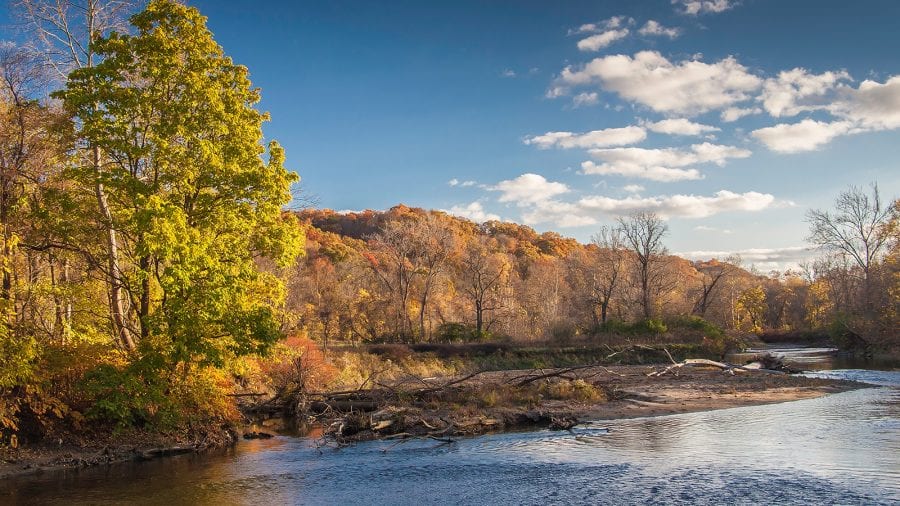
Boston Store Visitor Center
Starting at the Boston Store Visitor Center is the best since the park rangers that work here can give you expert tips and advice. You are also able to be souvenirs or a hiking compass if you want it for your treks. There are exhibitions inside that teach you and your family more about the history of the area as well.
Brandywine Falls
This waterfall is one of the most popular sites in the park. It is 86 feet high, and instead of falling straight down, it cascades over multiple levels in the stones below. It is highly picturesque and beloved by tourists and photographers. If you want to get up close, make sure you protect your camera with a hiking camera backpack.
The Ohio and Erie Canal Towpath
Along with the history that you can learn at the visitor centers, and you can also experience it firsthand. Travel down the Towpath that the mules used to use when they hauled the boats down the rivers.
Blue Hen Falls
Another one of the popular waterfalls in the area is called Blue Hen Falls. It is regarded as one of the prettiest falls with its wispy tendrils of water that seem to float down to the river more than fall to it. You can make it into a longer hike if you feel like lacing up your hiking boots for a good trek out or park almost right beside it.
Ledges Trail
The Ledges Trail is another one of the most popular trails in the park. This is one of the few that doesn’t highlight the great waterfalls in Cuyahoga Valley National Park. Instead, it showcases interesting geological formations, rocks that have been worn away to form overhanging ledges along much of the trail. In the end, pop out your camping chair and take in the view. The Ledges Overlook is one of the only ones in this whole, mostly flat, National Park.
Go snowshoeing
Cuyahoga Valley National Park doesn’t only offer fun things to do during the summer season. The park is also quite accessible during the winter and offers visitors a chance to do a lot of wintertime activities. One of these is snowshoeing. If you have a favorite trail during the summer, check out what it looks like covered in snow and ice.
Cuyahoga Valley Scenic Railroad
Finally, if you are looking for unique activities to do with your kids, take them on a train ride adventure. Just as it is popular to bike or walk along the Towpath, you can also take a train along the winding riverways. Get on and off again quickly, or go the whole route and back. They have drinks and food served on board as well, so it can be a significant part of the day out.
Amanda Williams
Amanda Williams is a writer, plant-nerd, and outdoor enthusiast. She has traveled extensively, around the U.S., throughout Asia, Europe, and Latin America. Everywhere she treks, she takes time to enjoy the outdoors. John Muir is her hero. She aspires to inspire people to live better as he did.
